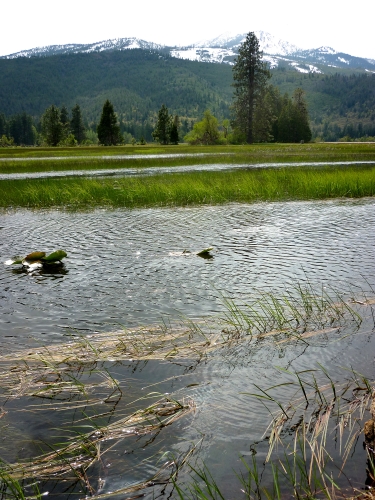THIS POST WAS FIRST PUBLISHED MAY 2011.
Walk on
and forget..
This is the end of my mantra of uplift. Having this verse, putting daily life under the microscope has re-ignited my appreciation for our daily scriptures. With constant repetition, they have become ingrained in my psyche and I’d not realized that before. Walking along the other day it occurred to me that, unknowingly, our daily life is a constant enactment of the scriptures and that they play sub-audibly all of the time. They are silent poetry we aspire to recite and give life to. As we wash the dishes.
Having woken up, risen up and stepped out there is then the walking on, the keeping going. There is so much to say about walking on, taking the next step. That’s doing the right thing when a lesser act would somewhat suffice. Embark on a course of action and then take a left turn when conditions ask that of us. While at the same time wanting desperately to get there by the faster route. However, we simply can’t cut corner or miss out the steps in between, if we are to hold true to our deepest intention.
Here is a line from the Sandokai which speaks volumes. As you walk on distinctions between near and far are lost (sight of). And I believe that to be true not because we become rudderless or directionless in our living. Far from it. Somehow contentment creeps in and eclipses the struggle and the striving for attainment, while at the same time we do attain, perhaps achieve great things and struggle in the process. The line that follows the one quoted above is, and should you lost become there will arise obstructing mountains and great rivers! It is quite easy to get lost. Especially so if one is constantly travelling ahead of where one actually is. Physically for example. On a city street at rush hour people are already in their offices as they cross the road. On the cloister or on the way home. Are you still with yourself where you are or are you ahead of yourself? Thankfully, and tragically at times, we are brought back to where we are with a thump or a bang, a trip or a fall. Today letting go is to refrain from becoming ahead of yourself. This applies across the board.
What of forgetting? Years ago I rescued a baby seal from the beach on the Oregon coast. To cut a long story short I ended up putting it back where I found it. I’d made a mistake which probably cost the life of that seal. I’m not proud of that. As I walked up the beach, having delivered it to its watery home, I knew I must not look back as much as I wanted to know if it was OK. If I had I might well have compounded my mistake by not letting it go. Forgetting involves refraining from looking back. Refraining from walking on while at the same time, looking back over one’s shoulder! That’s as hard, and often as heart-wrenching, as turning one’s back on a vulnerable creature. Yet it must be done. Constantly
Returning now full circle, to meditation, to the darkened hall of unknowing which is our home we never leave, I’m wondering if I have anything left to say.
Nope, that’s it. Thanks for listening.

